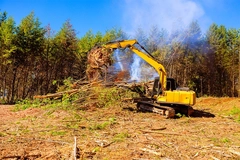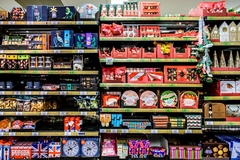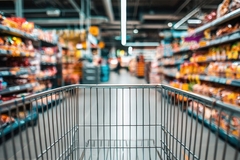
- Industry news
Industry news
- Category news
Category news
- Reports
- Key trends
- Multimedia
- Journal
- Events
- Suppliers
- Home
- Industry news
Industry news
- Category news
Category news
- Reports
- Key trends
- Multimedia
- Events
- Suppliers
Tetra Pak launches “ground breaking” synchrotron radiation research for fiber-based F&B packaging
08 Feb 2023 --- Tetra Pak is launching what it says is “ground-breaking” research to advance fiber-based packaging for F&B applications in collaboration with MAX IV – the most modern synchrotron radiation (the electromagnetic radiation emitted when charged particles travel in curved paths) laboratory in the world.
The research aims to uncover fresh insights into the nanostructure of fiber materials, with the first application to optimize the composition of materials used for paper straws, which are increasingly used as single-use plastics come under bans throughout the world.
This is the very first industrial research and development experiment at ForMAX, a new research station dedicated to studying materials from the forest, located at the MAX IV Laboratory in Lund, Sweden.

“A fundamental understanding of the structure and properties of materials is crucial as we work toward developing the future package. Our ambition is to provide the world’s most sustainable food package, and experiments at ForMAX will clearly support us in this mission,” says Eva Gustavsson, vice president of Materials & Package at Tetra Pak.
“The package of the future needs to be fully recyclable and have a low environmental impact. Using renewable materials and increasing fiber-based material within packages will be vital. With this research, Tetra Pak is helping to uncover fresh insights into plant-based materials as a basis for future innovations.”
 The MAX IV lab in Lund, Sweden.Fiber-based problems
The MAX IV lab in Lund, Sweden.Fiber-based problems
As the global demand for safe, nutritious food intensifies and the scarcity of raw materials increases, the need to develop more sustainable packaging solutions that use less of these scarce resources has become urgent, says Tetra Pak.
New materials based on paper will bring novel opportunities, but they need to remain food safe, recyclable, and be more durable against liquids and humidity while meeting the increased sustainability demands. As bans on chemical agents such as PFAS – commonly used to grease-proof non-plastic materials, and legislation on recycling and recyclability rates intensifies, F&B packages require cost-effective solutions.
“The experiment conducted at ForMAX is a milestone for both academia and industry. The research station is the first of its kind and will facilitate both fundamental and applied industrial research on how new, sustainable materials can be used going forward,” says Kim Nygård, manager for ForMAX beamline at MAX IV.
Starting with straws
Tetra Pak says that by using synchrotron radiation, it can develop currently deficient but important properties in paper straws. The same research can then be used to improve other forms of fiber-based packaging.
“Our first experiment, which starts with paper straws, provides additional analysis capabilities into how paper straw material responds to changes in the environment in real-time, as well as how the straw interacts with different types of liquids under stringent conditions,” says Eskil Andreasson, technology specialist for Virtual Modeling at Tetra Pak.
“These new insights and knowledge will be applied to developing the paper straws of the future in our virtual modeling tools, helping us to improve their functionality.”
Edited by Louis Gore-Langton











